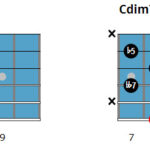Making a guitar amp cabinet is a rewarding project for any guitarist looking to enhance their sound. At guitarplayers.net, we’re dedicated to helping you achieve the best possible tone, and building your own cabinet is a fantastic way to customize your rig and save money. Crafting your own guitar amp enclosure opens up a world of sonic possibilities.
1. Understanding The Basics Of Guitar Amp Cabinets
Before diving into the construction process, it’s crucial to understand the fundamental principles behind guitar amp cabinets.
1.1. What Is A Guitar Amp Cabinet?
A guitar amp cabinet, often called a speaker cabinet or simply a cab, is an enclosure designed to house one or more loudspeakers specifically for use with a guitar amplifier. These cabinets play a vital role in shaping the overall sound of your guitar, influencing factors such as:
- Tone: The cabinet’s construction, materials, and speaker configuration all contribute to the tonal characteristics of your guitar.
- Projection: The cabinet helps to project the sound of your amplifier, making it louder and more directional.
- Resonance: The cabinet’s internal volume and construction can create resonance, adding depth and character to your tone.
1.2. Types Of Guitar Amp Cabinets
Guitar amp cabinets come in various shapes and sizes, each with its own sonic characteristics. The two most common types are:
-
Open-Back Cabinets: These cabinets have an open back, allowing sound to escape from the rear. This design typically results in a more spacious and airy tone with a wider dispersion of sound. They are often preferred for cleaner tones and smaller venues.
-
Closed-Back Cabinets: These cabinets have a sealed back, preventing sound from escaping. This design generally produces a tighter, more focused tone with a stronger bass response. They are often favored for rock, metal, and other genres that require a more aggressive sound.
1.3. Key Components Of A Guitar Amp Cabinet
A guitar amp cabinet consists of several essential components that work together to produce sound:
- Enclosure: The wooden box that houses the speaker(s). The size, shape, and material of the enclosure all affect the cabinet’s tonal characteristics.
- Baffle: The flat board on the front of the cabinet that the speaker(s) are mounted to. The baffle’s material and construction can also influence the sound.
- Speaker(s): The loudspeaker(s) that convert the electrical signal from the amplifier into sound. The type, size, and number of speakers all have a significant impact on the cabinet’s tone and projection.
- Wiring: The internal wiring that connects the speaker(s) to the input jack. Proper wiring is essential for ensuring optimal performance and preventing damage to the amplifier.
- Input Jack: The jack on the back of the cabinet where you plug in the speaker cable from your amplifier.
- Grill Cloth: The fabric that covers the front of the cabinet, protecting the speaker(s) from damage while allowing sound to pass through.
- Hardware: The handles, corners, feet, and other hardware that make the cabinet easier to transport and protect it from wear and tear.
2. Why Build Your Own Guitar Amp Cabinet?
While many excellent commercially made guitar amp cabinets are available, building your own offers several advantages:
2.1. Customization
Building your own cabinet allows you to customize every aspect of its design to perfectly match your specific needs and preferences. You can choose the size, shape, materials, speaker configuration, and finish to create a cabinet that is truly unique and tailored to your individual playing style.
2.2. Cost Savings
Building your own cabinet can be significantly cheaper than buying a commercially made one, especially if you have access to reclaimed materials or are willing to put in the time and effort to source affordable components.
2.3. Learning Experience
Building a guitar amp cabinet is a great way to learn about woodworking, electronics, and acoustics. It can also be a very rewarding experience to create something with your own hands that you can use to make music.
2.4. Quality Control
When you build your own cabinet, you have complete control over the quality of the materials and construction. This allows you to ensure that your cabinet is built to the highest standards and will last for years to come.
3. Planning Your Guitar Amp Cabinet Project
Before you start cutting wood, it’s essential to carefully plan your project. This will help you avoid mistakes, save time, and ensure that you end up with a cabinet that meets your expectations.
3.1. Determine Your Cabinet Type And Size
The first step is to decide what type of cabinet you want to build (open-back or closed-back) and what size it should be. Consider the following factors:
- Your Playing Style: What type of music do you play? What kind of tone are you looking for?
- Your Amplifier: What is the wattage of your amplifier? What is the impedance of the speaker output?
- Your Venue: Where will you be using the cabinet? How much space do you have?
3.2. Choose Your Speaker(s)
The speaker(s) are the most critical component of your cabinet, so it’s essential to choose them carefully. Consider the following factors:
- Size: 12-inch speakers are the most common for guitar amp cabinets, but 10-inch and 15-inch speakers are also available.
- Wattage: The speaker(s) must be able to handle the wattage of your amplifier.
- Impedance: The impedance of the speaker(s) must match the impedance of your amplifier’s speaker output.
- Tone: Different speakers have different tonal characteristics. Research different speakers and listen to sound samples to find ones that match your desired tone. Eminence and Celestion are popular choices. According to research from Guitar World, in October 2023, Celestion speakers are still preferred.
3.3. Select Your Materials
The materials you use to build your cabinet will also affect its tone and durability. Consider the following options:
- Wood: Void-free birch plywood is the most common choice for guitar amp cabinets due to its strength, durability, and tonal properties. Solid pine is another option, especially for vintage-style cabinets.
- Baffle: Birch plywood is also a good choice for the baffle.
- Grill Cloth: Choose a grill cloth that is both durable and visually appealing.
- Hardware: Choose high-quality hardware that will withstand wear and tear.
3.4. Create A Detailed Plan
Once you have decided on the type, size, speaker(s), and materials for your cabinet, it’s time to create a detailed plan. This plan should include:
- Dimensions: Accurate measurements of all the cabinet’s components.
- Cut List: A list of all the pieces of wood you will need to cut.
- Wiring Diagram: A diagram showing how to wire the speaker(s) to the input jack.
- Assembly Instructions: Step-by-step instructions on how to assemble the cabinet.
4. Tools And Materials Needed
Before you start building, make sure you have all the necessary tools and materials. Here’s a comprehensive list:
4.1. Tools
- Safety Glasses
- Hearing Protection
- Measuring Tape
- Pencil
- Square
- Circular Saw
- Jigsaw
- Drill
- Screwdriver
- Router (Optional)
- Sander
- Clamps
- Soldering Iron
- Wire Strippers
- Staple Gun
4.2. Materials
- Wood (Birch Plywood Or Solid Pine)
- Baffle Material (Birch Plywood)
- Grill Cloth
- Speaker(s)
- Input Jack
- Speaker Wire
- Screws
- Wood Glue
- Finish (Paint, Stain, Or Varnish)
- Hardware (Handles, Corners, Feet)
- T-Nuts (For Speaker Mounting)
5. Step-By-Step Guide To Building Your Guitar Amp Cabinet
Now that you have planned your project and gathered your tools and materials, it’s time to start building. Follow these step-by-step instructions:
5.1. Cut The Wood
Using your cut list, carefully cut all the pieces of wood for your cabinet. Be sure to cut accurately and safely.
5.2. Assemble The Enclosure
Using wood glue and screws, assemble the enclosure of your cabinet. Clamp the pieces together while the glue dries. Ensure the cabinet is square and that all joints are tight.
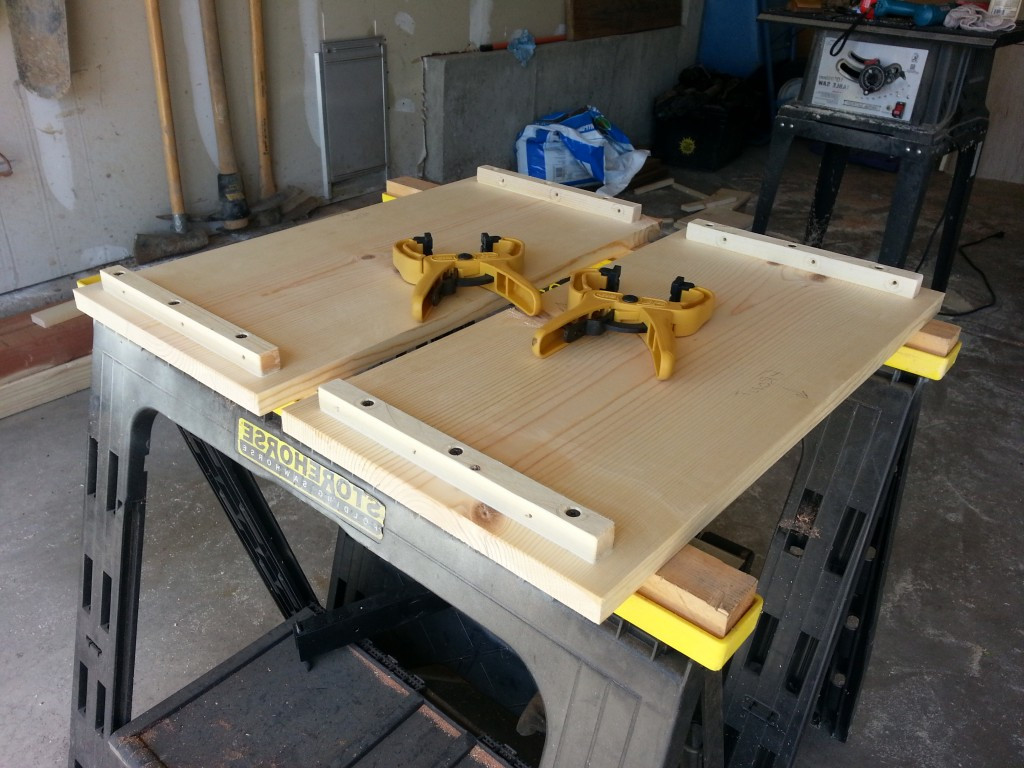 speaker-cab2
speaker-cab2
5.3. Prepare The Baffle
Cut the baffle to the correct size and cut out the hole(s) for the speaker(s). If you are using a router, you can use it to create a rounded edge around the speaker hole(s).
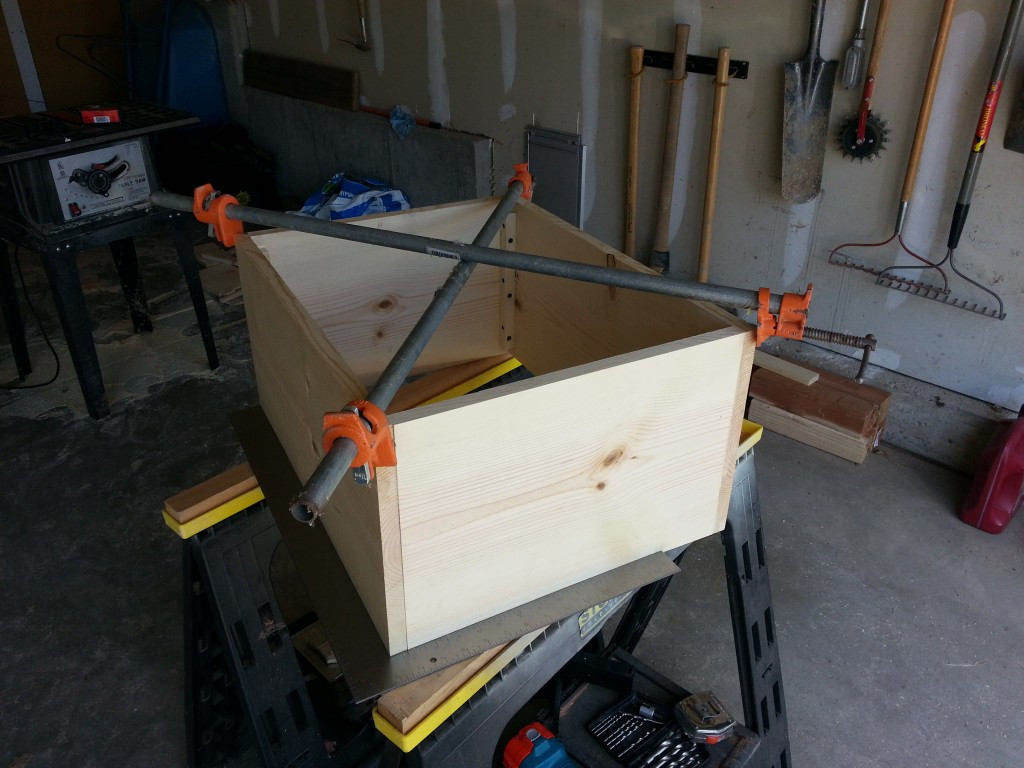 speaker-cab3
speaker-cab3
5.4. Install T-Nuts
Install T-nuts on the back of the baffle for mounting the speaker(s).
5.5. Finish The Enclosure
Sand the enclosure smooth and apply your desired finish (paint, stain, or varnish). Allow the finish to dry completely.
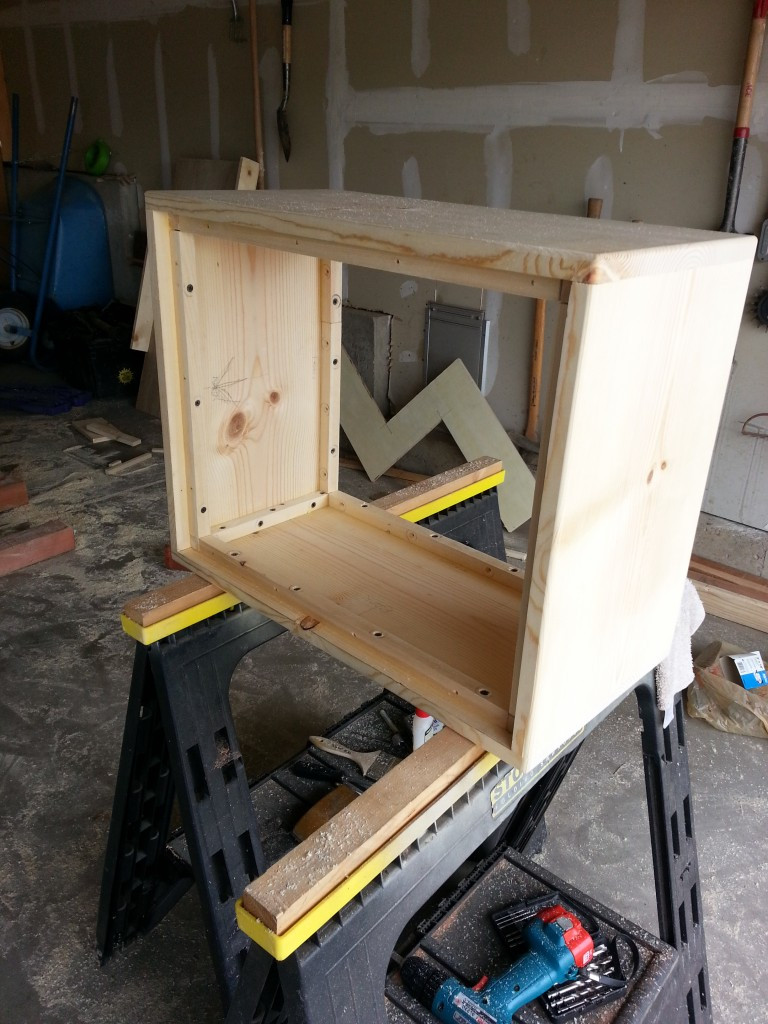 speaker-cab4
speaker-cab4
5.6. Attach The Baffle
Attach the baffle to the enclosure using screws and wood glue.
5.7. Wire The Speaker(s)
Using your wiring diagram, wire the speaker(s) to the input jack. Solder all connections for a secure and reliable connection.
5.8. Mount The Speaker(s)
Mount the speaker(s) to the baffle using screws.
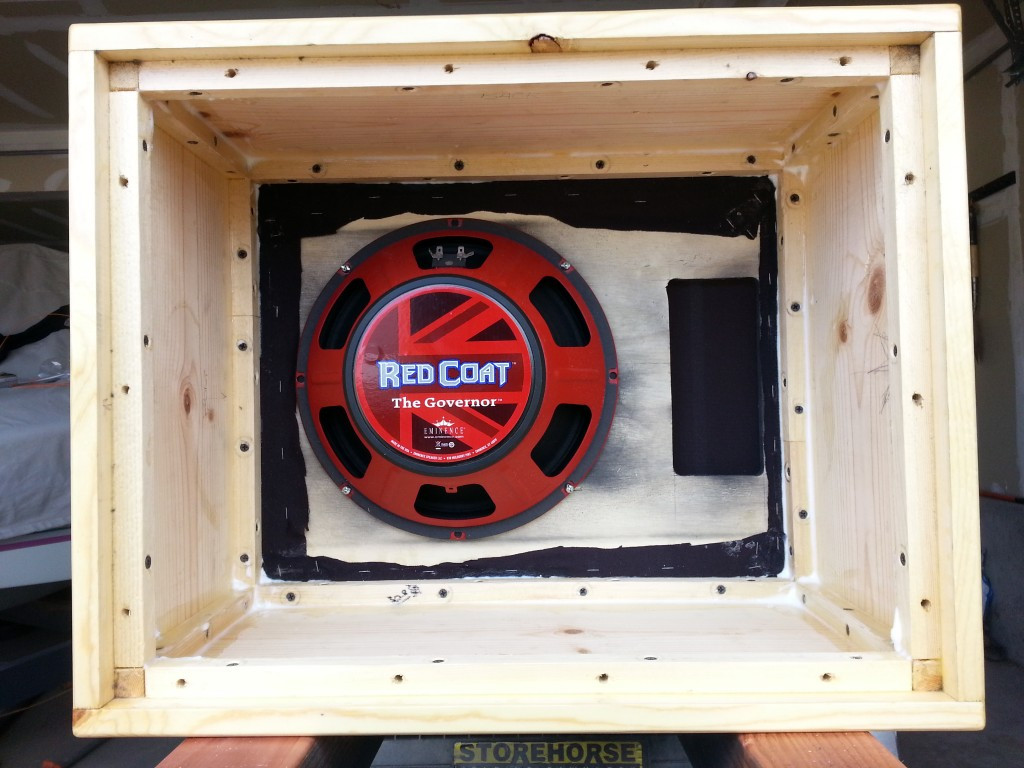 20130831_141251
20130831_141251
5.9. Install The Grill Cloth
Stretch the grill cloth over the baffle and staple it to the back. Trim any excess grill cloth.
5.10. Install The Hardware
Install the handles, corners, feet, and any other desired hardware.
5.11. Test Your Cabinet
Connect your cabinet to your amplifier and test it to make sure everything is working correctly.
 1×12 Speaker Cabinet
1×12 Speaker Cabinet
6. Tips For Optimizing Your Guitar Amp Cabinet
Here are some additional tips to help you optimize your guitar amp cabinet for the best possible sound:
6.1. Experiment With Different Speaker Placement
The placement of the speaker(s) within the cabinet can affect the tone. Experiment with different speaker positions to find what sounds best to you.
6.2. Add Damping Material
Adding damping material, such as fiberglass or foam, to the inside of the cabinet can help to reduce unwanted resonances and improve the overall clarity of the sound.
6.3. Use High-Quality Speaker Wire
Using high-quality speaker wire can improve the signal transfer between the amplifier and the speaker(s).
6.4. Seal All Joints
Ensure that all joints in the cabinet are sealed tightly to prevent air leaks, which can negatively affect the sound.
6.5. Consider Porting
Porting a cabinet can increase the bass response. However, it requires careful calculations to ensure proper tuning.
7. Guitar Amp Cabinet Design Considerations
When designing your guitar amp cabinet, there are several key factors to consider to ensure optimal performance and sound quality.
7.1. Cabinet Dimensions And Volume
The internal dimensions of the cabinet significantly impact its resonance and tonal characteristics. Larger cabinets generally produce a deeper bass response, while smaller cabinets tend to have a tighter, more focused sound. The ideal volume depends on the speaker(s) you plan to use and the desired tonal characteristics.
7.2. Baffle Design
The baffle is the flat board on the front of the cabinet that the speaker(s) are mounted to. The baffle’s material and construction can influence the cabinet’s sound.
- Material: Birch plywood is a common choice for baffles due to its strength and tonal properties.
- Thickness: A thicker baffle will be more rigid and less prone to vibration, resulting in a tighter, more focused sound.
- Mounting: The way the baffle is mounted to the cabinet can also affect the sound. A tightly sealed baffle will generally produce a tighter bass response.
7.3. Cabinet Construction Techniques
The way the cabinet is constructed can also affect its sound and durability.
- Joinery: Strong, well-executed joints are essential for ensuring the cabinet is sturdy and airtight. Common joinery techniques include butt joints, rabbet joints, dado joints, and dovetail joints.
- Bracing: Adding internal bracing can help to stiffen the cabinet and reduce unwanted vibrations.
- Sealing: Sealing all joints and seams with caulk or sealant can prevent air leaks, which can negatively affect the sound.
7.4. Speaker Impedance Matching
Matching the impedance of the speaker(s) to the impedance of the amplifier is crucial for ensuring optimal performance and preventing damage to the amplifier.
- Series Wiring: Wiring speakers in series increases the total impedance. For example, two 8-ohm speakers wired in series will have a total impedance of 16 ohms.
- Parallel Wiring: Wiring speakers in parallel decreases the total impedance. For example, two 8-ohm speakers wired in parallel will have a total impedance of 4 ohms.
7.5. Porting And Tuning
Porting a cabinet involves adding one or more openings to the enclosure to allow air to escape. Porting can increase the bass response of the cabinet, but it requires careful calculations to ensure proper tuning.
- Port Size: The size of the port(s) will affect the tuning frequency of the cabinet.
- Port Length: The length of the port(s) will also affect the tuning frequency.
- Tuning Frequency: The tuning frequency is the frequency at which the cabinet will resonate most strongly.
8. Common Mistakes To Avoid
Building a guitar amp cabinet can be a rewarding experience, but it’s essential to avoid common mistakes that can compromise the cabinet’s performance and sound quality.
8.1. Using Low-Quality Materials
Using low-quality materials, such as cheap plywood or hardware, can result in a cabinet that is not durable or does not sound good.
8.2. Inaccurate Cutting
Inaccurate cuts can result in a cabinet that is not square or airtight, negatively affecting the sound.
8.3. Poor Joinery
Poorly executed joints can result in a cabinet that is weak and prone to vibration.
8.4. Improper Wiring
Improper wiring can result in a cabinet that does not function correctly or can damage the amplifier.
8.5. Ignoring Safety Precautions
Ignoring safety precautions, such as wearing safety glasses and hearing protection, can result in injury.
9. Alternative Cabinet Designs
Beyond the standard open-back and closed-back designs, there are several alternative cabinet designs that offer unique tonal characteristics.
9.1. Ported Cabinets
Ported cabinets feature one or more openings that allow air to escape from the enclosure. This design can enhance the bass response and overall efficiency of the cabinet.
9.2. Iso Cabinets
Iso cabinets are designed to isolate the speaker from the surrounding environment, reducing sound leakage and allowing for quieter recording sessions.
9.3. Bass Reflex Cabinets
Bass reflex cabinets utilize a tuned port to enhance the low-frequency response, providing a deeper and more powerful bass sound.
9.4. Horn-Loaded Cabinets
Horn-loaded cabinets use a horn-shaped waveguide to amplify the sound and improve projection. These cabinets are often used for high-volume applications.
10. Maintaining Your Guitar Amp Cabinet
Proper maintenance is essential for ensuring that your guitar amp cabinet lasts for years to come and continues to sound its best.
10.1. Regular Cleaning
Regularly clean your cabinet with a soft, dry cloth to remove dust and dirt. Avoid using harsh chemicals or abrasive cleaners.
10.2. Hardware Check
Periodically check the hardware (handles, corners, feet) and tighten any loose screws.
10.3. Grill Cloth Care
Clean the grill cloth with a soft brush or vacuum cleaner to remove dust and debris.
10.4. Speaker Inspection
Inspect the speaker(s) regularly for any signs of damage, such as tears or punctures.
10.5. Storage
When not in use, store your cabinet in a dry, protected environment.
11. GuitarPlayers.Net: Your Resource For Guitar Knowledge
At guitarplayers.net, we are passionate about helping guitarists of all levels achieve their musical goals. We offer a wide range of resources, including:
- Lessons: Learn from experienced instructors with our comprehensive guitar lessons.
- Reviews: Get in-depth reviews of guitars, amplifiers, and other gear.
- Sheet Music: Find sheet music for your favorite songs.
- Community Forum: Connect with other guitarists in our active community forum.
Address: 1140 Boylston Street, Boston, MA 02215, United States.
Phone: +1 (617) 747-2261.
Website: guitarplayers.net.
12. Join The GuitarPlayers.Net Community
Join the guitarplayers.net community today and connect with other guitarists from around the world! Share your knowledge, ask questions, and get feedback on your playing.
13. Explore Our Guitar Lessons And Reviews
Explore our comprehensive guitar lessons and in-depth gear reviews to take your playing to the next level! Whether you’re a beginner or an experienced player, we have something for everyone.
14. Download Sheet Music And Tabs
Download sheet music and tabs for your favorite songs and start playing today! We have a vast library of music in various genres.
15. Frequently Asked Questions (FAQ) About Guitar Amp Cabinets
15.1. What Is The Best Wood For A Guitar Amp Cabinet?
Void-free birch plywood is generally considered the best wood for guitar amp cabinets due to its strength, durability, and tonal properties. Solid pine is another option, especially for vintage-style cabinets.
15.2. What Size Speaker Should I Use For My Guitar Amp Cabinet?
12-inch speakers are the most common for guitar amp cabinets, but 10-inch and 15-inch speakers are also available. The best size for you will depend on your playing style and the type of tone you are looking for.
15.3. What Is The Difference Between An Open-Back And A Closed-Back Guitar Amp Cabinet?
Open-back cabinets have an open back, allowing sound to escape from the rear, resulting in a more spacious and airy tone. Closed-back cabinets have a sealed back, producing a tighter, more focused tone with a stronger bass response.
15.4. How Do I Match The Impedance Of My Speaker(s) To My Amplifier?
Ensure the impedance of the speaker(s) matches the impedance of your amplifier’s speaker output. Wiring speakers in series increases the total impedance, while wiring speakers in parallel decreases the total impedance.
15.5. What Is Porting?
Porting a cabinet involves adding one or more openings to the enclosure to allow air to escape. Porting can increase the bass response of the cabinet, but it requires careful calculations to ensure proper tuning.
15.6. Do I Need To Add Damping Material To My Guitar Amp Cabinet?
Adding damping material, such as fiberglass or foam, to the inside of the cabinet can help to reduce unwanted resonances and improve the overall clarity of the sound.
15.7. How Do I Maintain My Guitar Amp Cabinet?
Regularly clean your cabinet with a soft, dry cloth, check the hardware, and inspect the speaker(s) for any signs of damage.
15.8. Can I Use Any Type Of Speaker Wire For My Guitar Amp Cabinet?
It is recommended to use high-quality speaker wire to improve the signal transfer between the amplifier and the speaker(s).
15.9. What Are T-Nuts?
T-nuts are hardware components used to mount the speaker(s) to the baffle.
15.10. Where Can I Find More Information About Building Guitar Amp Cabinets?
You can find more information about building guitar amp cabinets on guitarplayers.net, as well as in books, magazines, and online forums.
16. Take Action And Build Your Dream Cabinet
Ready to take your guitar playing to the next level? Build your own guitar amp cabinet and experience the satisfaction of crafting your unique sound. Visit guitarplayers.net for more resources and inspiration! Whether you’re drawn to the airy resonance of an open-back design or the focused punch of a closed-back enclosure, the journey of crafting your own cabinet promises to be both educational and sonically rewarding. Remember to prioritize safety, plan meticulously, and embrace the process of experimentation. With dedication and attention to detail, you’ll create a cabinet that not only complements your playing style but also stands as a testament to your passion for music. So, gather your tools, select your materials, and embark on this exciting endeavor. The perfect guitar amp cabinet awaits your creation!

